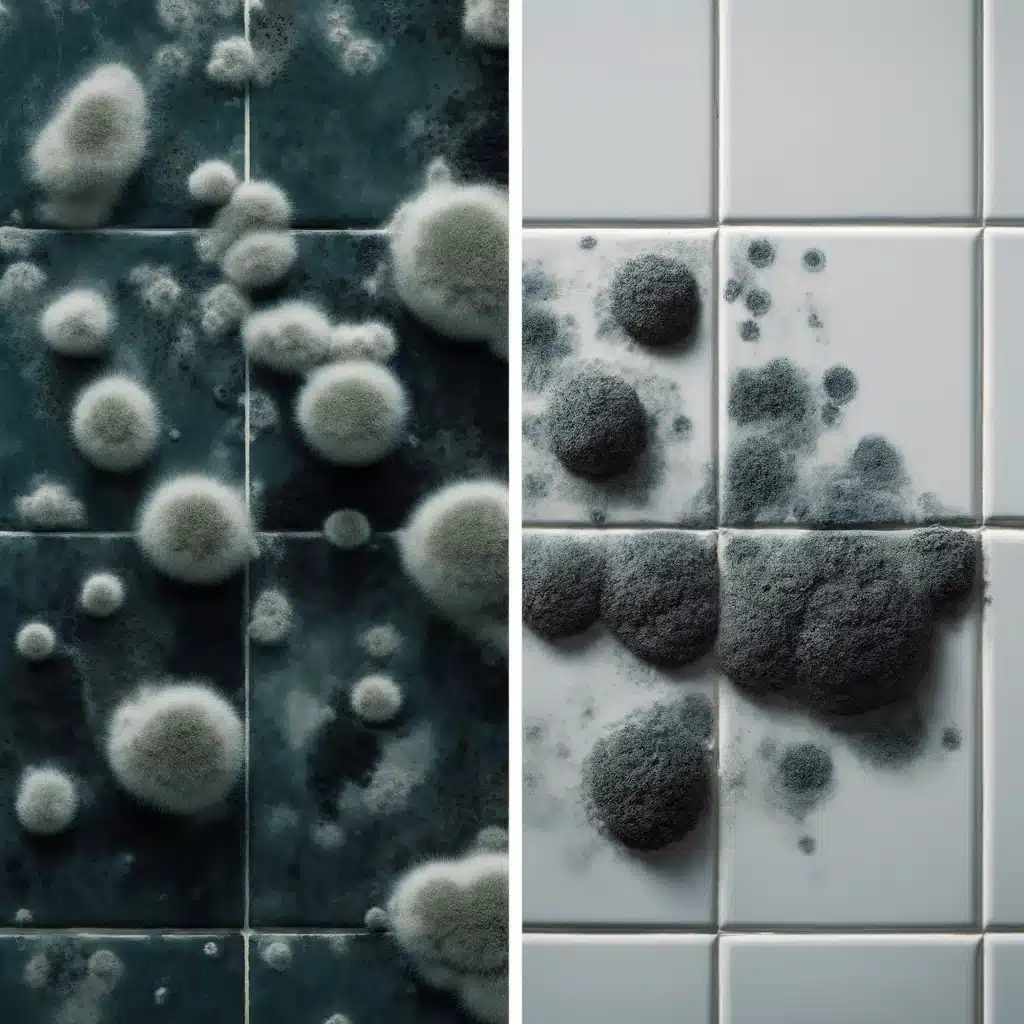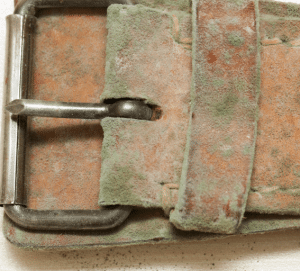Mold and mildew are types of fungi that thrive in damp and humid places. Both can cause damage to your home and pose health risks, but there are important differences between black mold and mildew that you need to know. Recognizing these differences can help you better identify, prevent, and deal with them effectively. One of the best ways to start this process is with a professional mold inspection to accurately assess the situation.
Black mold is usually dark green or black and can look slimy, while mildew tends to be gray or white and appears powdery. Knowing how to tell them apart is crucial because black mold can cause more serious health issues compared to mildew. Once you identify the presence of black mold, it’s essential to create a mold remediation protocol to address the problem. By understanding these differences and taking proactive measures, you can protect your home and your health from the harmful effects of black mold and mildew.
What is Black Mold?
Black mold, scientifically known as Stachybotrys chartarum or Stachybotrys atra, is a dangerous type of mold that people need to be aware of. It usually has a greenish-black color and can often look slimy. Additionally, it has a musty and unpleasant odor that makes it easy to recognize.
Having black mold in your home can result in significant health issues. Breathing in black mold spores can cause respiratory issues, allergic reactions, and other health complications. Because of these risks, it’s crucial to address any black mold issues quickly to ensure your living environment remains safe and healthy.
Characteristics and appearance of black mold
- Greenish-black or slimy in color
- Grows in a splotchy, irregular pattern
- Has a distinct musty or earthy odor
- Thrives in areas with high moisture and low light
- Often found on materials such as drywall, wood, paper, and insulation
Health risks associated with black mold exposure
Exposure to black mold can lead to various health issues, especially for individuals with weakened immune systems, respiratory conditions, or allergies. Potential health risks include:
- Respiratory problems (coughing, wheezing, shortness of breath)
- Nasal and sinus congestion
- Eye irritation
- Skin rashes or irritation
- Headaches
- Fatigue
- Nausea and vomiting
- Neurological issues (dizziness, memory loss, mood swings)
Identifying Black Mold in Your Home
- Visually inspect areas with moisture issues, such as bathrooms, basements, and around leaks or water damage.
- Look for greenish-black or slimy growth on surfaces.
- Pay attention to musty or earthy odors, which can indicate the presence of black mold.
- Consider hiring a professional mold inspector for accurate identification and assessment.
What is Mildew?
Mildew is a type of fungus that often appears on surfaces in damp, humid conditions. You might notice it as a white or gray powdery substance on walls, ceilings, or even fabrics. Mildew thrives in places with poor ventilation and high moisture levels, making bathrooms, kitchens, and basements common areas for its growth. While it might seem less alarming than black mold, mildew still requires attention and care to prevent it from spreading.
Although mildew is generally less harmful than black mold, it can still cause significant damage and health issues if ignored. Over time, mildew can weaken the surfaces it grows on, leading to structural problems in your home. Additionally, prolonged exposure to mildew can cause respiratory problems and allergic reactions, especially for those with asthma or other respiratory conditions. Addressing mildew quickly is essential to maintaining a healthy and safe living environment.
Characteristics and appearance of mildew
- Grayish-white or yellowish in color
- Powdery or fluffy in texture
- Grows in a flat, irregular pattern
- Often found on surfaces such as walls, fabrics, and paper
- Has a mild, musty odor
Health risks associated with mildew exposure
While mildew is typically less toxic than black mold, prolonged exposure can still lead to health issues, particularly for individuals with allergies or respiratory conditions. Potential health risks include:
- Respiratory irritation (coughing, wheezing, difficulty breathing)
- Eye irritation
- Skin rashes or irritation
- Aggravation of asthma symptoms
How to identify mildew in your home
- Visually inspect areas with high humidity or moisture, such as bathrooms, laundry rooms, and around windows.
- Look for grayish-white or yellowish-powdery growth on surfaces.
- Check for a mild, musty odor, which can indicate the presence of mildew.
- Pay attention to fabrics, paper, and other organic materials, as mildew often grows on these surfaces.
Differences Between Black Mold and Mildew
When it comes to keeping your home safe and healthy, understanding the differences between black mold and mildew is crucial. Black mold, often known for its dark green or black color, can be more harmful to your health. It tends to grow on materials with a lot of moisture, like leaky roofs, damp walls, or water-damaged areas. If left untreated, black mold can cause serious health issues, including respiratory problems, headaches, and even allergic reactions.
On the other hand, mildew is usually white or light gray and has a powdery texture. It typically appears on surfaces that are damp but not soaked, like shower walls, windowsills, and other areas with high humidity. While mildew can be unsightly and cause minor respiratory issues, it’s generally less dangerous than black mold. Both black mold and mildew thrive in moist environments, so keeping your home dry and well-ventilated is key to preventing their growth.
Prevention and Treatment of Black Mold and Mildew
Preventing and addressing black mold and mildew growth is essential for maintaining a healthy living environment. Here are some effective strategies:
Control moisture levels
To keep black mold and mildew at bay, it’s essential to manage the moisture levels in your home. You can do this by using dehumidifiers to reduce humidity, making sure your home is well-ventilated, and fixing any water leaks or moisture problems as soon as you spot them.
Clean and dry affected areas
If you see any black mold or mildew starting to grow, it’s important to clean those areas right away. Use a mix of water and detergent or a special mold/mildew cleaner to scrub the spots. After cleaning, make sure the area is completely dry to prevent mold or mildew from coming back.
Use mold-resistant products
When you’re renovating or building, think about using materials that resist mold. Mold-resistant drywall, paints, and sealants are great options to help keep black mold and mildew from growing in the future.
Improve air circulation
Good air circulation is key to preventing black mold and mildew. Open windows whenever you can, use fans to keep the air moving, and make sure rooms like bathrooms and kitchens have proper ventilation to reduce moisture build-up.
Hire professional remediation services
If you’re dealing with a severe or widespread black mold problem, it’s best to call in the professionals. Professional mold remediation services can safely and effectively remove the mold, ensuring your home is clean and safe.
Frequently Asked Questions
Can black mold and mildew cause health problems?
Yes, both black mold and mildew can cause health issues, particularly for individuals with weakened immune systems, respiratory conditions, or allergies. Black mold is considered more toxic and can lead to serious health problems, while mildew is generally less harmful but can still cause respiratory irritation and other issues.
How can I distinguish between black mold and mildew?
The appearance, color, texture, and odor can help distinguish between black mold and mildew. Black mold is greenish-black or slimy and has a musty, earthy odor, while mildew is grayish-white or yellowish and has a milder, musty smell. However, it’s best to have a professional mold inspector confirm the type of growth for accurate identification.
Can black mold and mildew grow on the same surface?
Yes, it is possible for black mold and mildew to grow on the same surface, especially in areas with high moisture levels and poor ventilation. However, they typically have different preferred environments, with black mold thriving in areas with high moisture and low light, while mildew prefers high humidity and organic materials.
Can I remove black mold or mildew myself?
Small areas of mildew growth can often be cleaned and removed by homeowners using appropriate cleaning solutions and proper safety precautions. However, for larger or more severe infestations of black mold, it is recommended to hire professional mold remediation services to ensure safe and effective removal.
How can I prevent black mold and mildew growth in my home?
Preventing black mold and mildew growth involves controlling moisture levels, improving ventilation, addressing water leaks or moisture issues promptly, using mold-resistant materials, and promoting air circulation. Regular cleaning and maintaining low humidity levels can also help discourage mold and mildew growth.
Conclusion
Understanding the differences between black mold and mildew is essential for maintaining a healthy and safe home. Both fungi thrive in damp and humid environments, but black mold is typically more harmful than mildew. Black mold appears dark green or black and can look slimy, while mildew is usually gray or white and powdery. Recognizing these characteristics can help you identify which type of fungus you are dealing with and take appropriate action.
At Mold Testing Houston, we specialize in identifying and addressing mold and mildew problems in your home. Our expert team is dedicated to helping you protect your living environment from these harmful fungi. If you suspect the presence of black mold or mildew, don’t wait for the problem to worsen. Early detection, clearing testing, and prompt action are key to preventing health issues and further damage to your property.
By choosing Mold Testing Houston, you are ensuring that your home is thoroughly inspected and treated by professionals who understand the complexities of mold and mildew. We provide comprehensive mold inspection, testing, and remediation services to give you peace of mind. Our aim is to ensure a safe and healthy environment for you and your family.
Don’t let mold and mildew endanger the safety and comfort of your home. Contact Mold Testing Houston today to schedule a mold inspection and take the first step toward a cleaner, healthier living space. With our expertise, you can rest assured that your home is in good hands. Protect your health and property by addressing mold and mildew issues promptly with the help of Mold Testing Houston.
End Note
At Mold Testing Houston, we don’t just test for mold—we provide peace of mind. Whether you’re in The Woodlands or the heart of Houston, our expert team is here to ensure your home remains a safe haven free from mold-related health risks.
Dive into our comprehensive range of services, tailored to meet all your mold testing needs. Our specialized mold testing services in Houston are designed to detect even the most hidden mold infestations.
Learn more about our mission and the passionate professionals behind our success on our About Us page. We are dedicated to providing top-notch service and safeguarding your health.
Our blog is filled with valuable information to help you understand the importance of mold testing and how it can benefit you. Stay updated with the latest tips by following us on Facebook.
Don’t wait for mold to become a problem. Reach out to us by visiting our Contact page. Our team is ready to assist you with any questions and to schedule your mold testing appointment.
At Mold Testing Houston, your health and safety are our top priorities. Join the many satisfied customers who trust us to keep their homes mold-free. Together, let’s create a healthier living space for you and your family.





